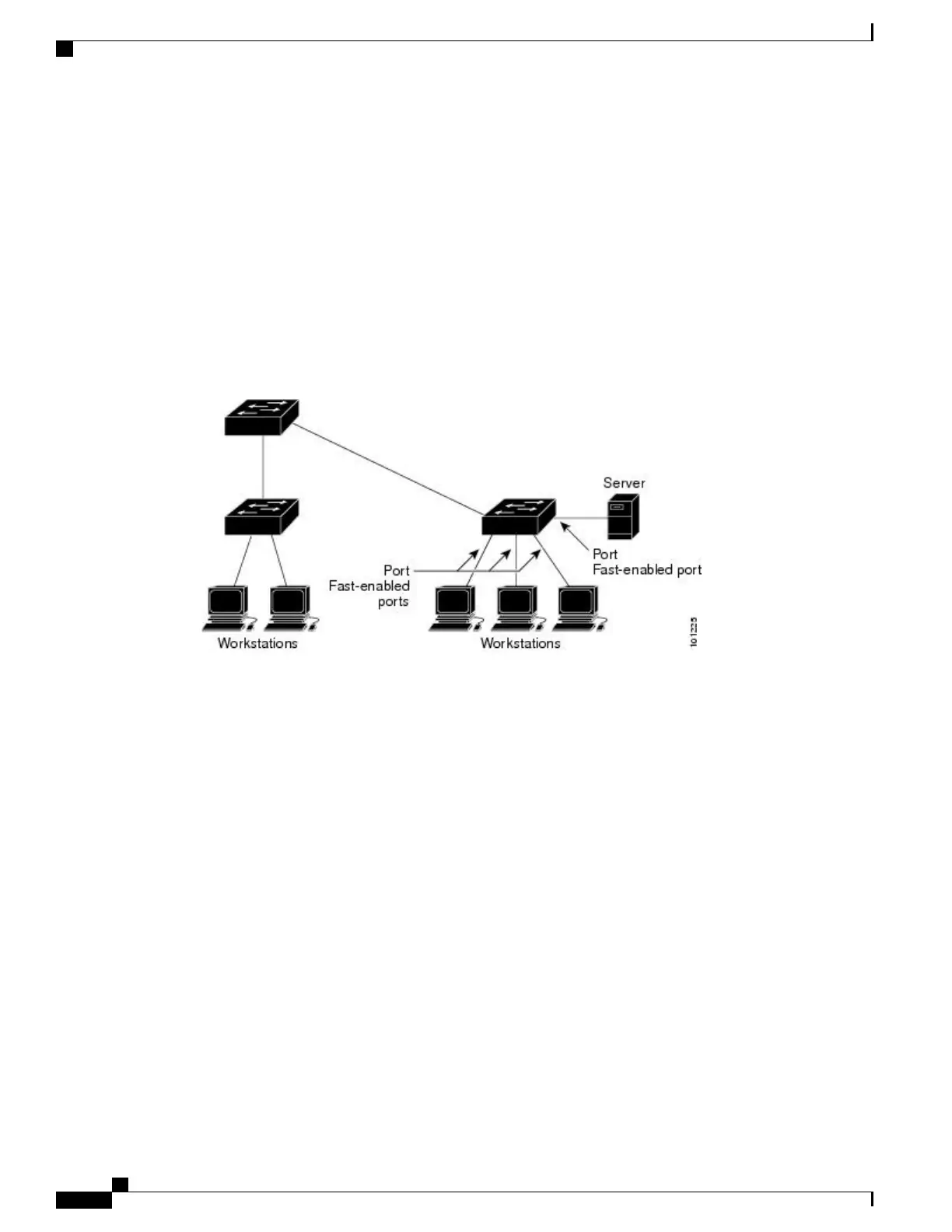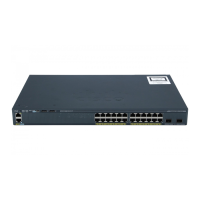Information About Optional Spanning-Tree Features
PortFast
PortFast immediately brings an interface configured as an access or trunk port to the forwarding state from a
blocking state, bypassing the listening and learning states.
You can use PortFast on interfaces connected to a single workstation or server to allow those devices to
immediately connect to the network, rather than waiting for the spanning tree to converge.
Figure 10: PortFast-Enabled Interfaces
Interfaces connected to a single workstation or server should not receive bridge protocol data units (BPDUs).
An interface with PortFast enabled goes through the normal cycle of spanning-tree status changes when the
switch is restarted.
You can enable this feature by enabling it on either the interface or on all nontrunking ports.
Related Topics
Enabling PortFast, on page 90
Restriction for Optional Spanning-Tree Features, on page 79
BPDU Guard
The Bridge Protocol Data Unit (BPDU) guard feature can be globally enabled on the switch or can be enabled
per port, but the feature operates with some differences.
When you enable BPDU guard at the global level on PortFast-enabled ports, spanning tree shuts down ports
that are in a PortFast-operational state if any BPDU is received on them. In a valid configuration,
PortFast-enabled ports do not receive BPDUs. Receiving a BPDU on a Port Fast-enabled port means an invalid
configuration, such as the connection of an unauthorized device, and the BPDU guard feature puts the port
in the error-disabled state. When this happens, the switch shuts down the entire port on which the violation
occurred.
Catalyst 2960-XR Switch Layer 2 Configuration Guide, Cisco IOS Release 15.0(2)EX1
80 OL-29424-01
Configuring Optional Spanning-Tree Features
Information About Optional Spanning-Tree Features

